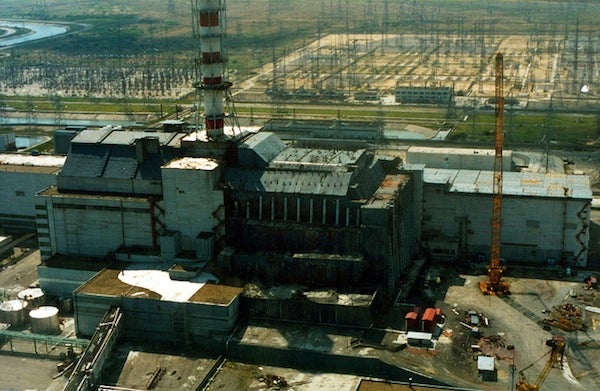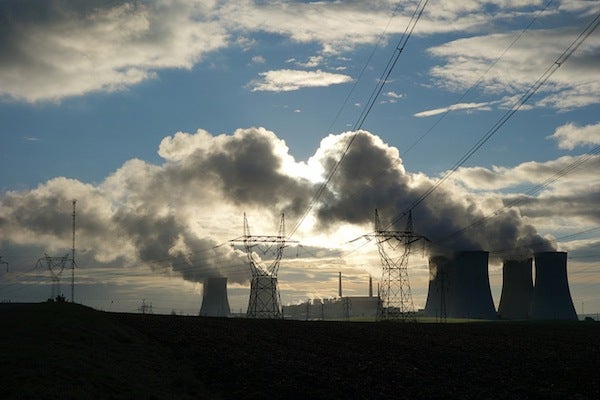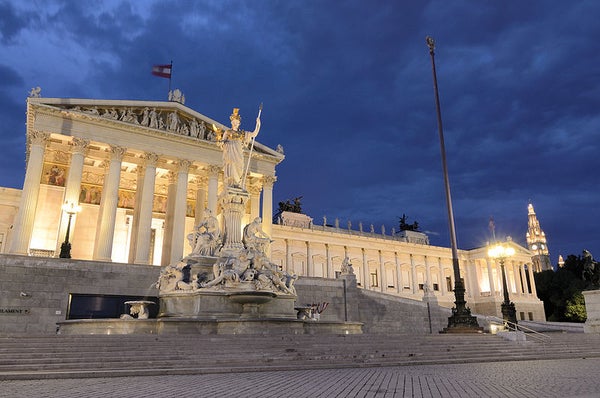This article was published in Scientific American’s former blog network and reflects the views of the author, not necessarily those of Scientific American
If you ever happen to meet a government official from Austria and would like to have some polite fun at their expense, tell them to get Austria to build nuclear power plants so it can better fight global warming. They will probably smile and squirm as they explain that the Constitution of Austria prohibits nuclear power. That’s how anti-nuclear Austria is: they put it in their constitution.
Austria has a relatively robust renewable energy industry. Thanks to its location in the Alps, it gets most of its electricity from hydropower. But it still failed to meet its Kyoto Protocol commitments for reducing greenhouse gas emissions. Nuclear power could help with this by displacing fossil fuels used for electricity and maybe also heating, and eventually by switching to electric cars.
Other countries could do the same. Worldwide, nuclear power could help make a large dent in greenhouse gas emissions while meeting growing energy demand. Emissions from nuclear power are not zero, due to energy consumed for uranium mining and power plant construction. But total nuclear power emissions are low—about 10-20 times lower than fossil fuel burning. Rapid expansion of nuclear power would require an energy-intensive mining and construction process, consuming much of the power that the initial plants produce. My colleague Joshua Pearce calls this energy cannibalism. The effect is diminished if the new nuclear power plants displace new fossil fuel plants. Either way, the eventual result is a low-carbon energy sector.
On supporting science journalism
If you're enjoying this article, consider supporting our award-winning journalism by subscribing. By purchasing a subscription you are helping to ensure the future of impactful stories about the discoveries and ideas shaping our world today.
But there’s a catch. Actually, there are two catches, but one is much larger than the other. The smaller catch is radioactivity. Accidents like Chernobyl and Fukushima release radioactive materials into the environment, harming people and ecosystems. While most of the Fukushima deaths were from the earthquake and tsunami, an estimated 1,600 people have died from evacuating Fukushima Prefecture to avoid the radioactivity. An evacuation causing 1,600 deaths is not trivial, nor is the contamination of territory. The Chernobyl Exclusion Zone remains uninhabited by humans 30 years after that accident, and may take more time than expected to recover, though meanwhile some wildlife flourishes there. Accounting for this risk increases the cost of nuclear power. However, accidents like that happen maybe once every few decades worldwide, making them small relative to many other problems.

The Chernobyl Nuclear Power Plant’s “sarcophagus”—a steel and concrete structure covering the No. 4 reactor building, which was designed to limit radiation following the 1986 disaster. (IAEA/Flickr)
Radioactive nuclear waste is also a problem. It lingers in the environment for tens or hundreds of thousands of years. However, so do carbon dioxide emissions. Here lies a double standard. The nuclear power industry is widely expected to sequester its radioactive pollution safely into the distant future, but the fossil fuel power industry is not expected to do the same for its carbon pollution. Yet whereas the radioactive pollution threatens relatively small local environmental harms, the carbon pollution threatens to destroy ecosystems worldwide and could even put the survival of humanity at risk. This makes radioactivity a relatively small catch for nuclear power.
The larger catch is nuclear weapons. Nuclear power and nuclear weapons use a lot of the same technology—hence all the fuss about Iran’s nuclear power program. (The Iran deal is excellent, by the way.) Widespread use of nuclear power could lead to nuclear weapons proliferation, and that could lead to nuclear war, and that could be very, very bad. The atomic bombings of Hiroshima and Nagasaki killed about 200,000 people total; in today’s largest cities the death toll could be several times more.
The worst consequence of nuclear war is probably nuclear winter. When all those cities burn, it sends smoke into the atmosphere. Nuclear explosions are so large, some of the smoke ends up in the stratosphere, which is the second layer of the atmosphere, above the clouds. That smoke remains aloft for ten or twenty years. It spreads across the globe, blocking sunlight, cooling the surface, and decreasing precipitation, all of which is terrible for plant growth, including the plants we grow for our food. No matter where in the world a nuclear war occurs, the rest of the world could struggle to feed itself. (The cooling would also postpone some global warming, but that is no comfort for a rapidly dying planet.) For nuclear power, that makes for a very large catch.

The Dukovany Nuclear Power Plant, Czech Republic. (IAEA/Flickr)
Given all this, should nuclear power plants be built? I’ll answer this question below, but first we should recognize that this is the right question to ask. Too often, risks like global warming and nuclear war are treated in isolation. People who worry about global warming think nuclear power is good, people who worry about nuclear war think it’s bad, and neither of them talk to each other enough to sort it out. There are too few integrated discussions like John Horgan’s recent Scientific American blog post or this excellent paper by Robert Socolow and Alexander Glaser of Princeton.
To answer the question, many factors should be considered, more than can be discussed here. (Socolow and Glaser provide a good start.) However, as a crude rule of thumb, I would say that nuclear power plants probably should be built whenever they are less expensive than solar power and other renewables, and wherever there is no significant proliferation risk. Some countries are just not going to build any nuclear weapons, regardless of whether they could.
Which countries fit this description? Well, Austria, for one. It has no major military adversaries, it’s not part of NATO, and it is so relentlessly anti-nuclear that it building nuclear weapons is virtually unthinkable. It’s even landlocked—no tsunamis. Unless large-scale renewable energy is cheaper for Austria, it should be one of the first countries to start building nuclear power plants.
There are of course other options. For global warming, in addition to renewables, energy efficiency and conservation should be pursued with vigor. For nuclear war, diplomacy to ease international tensions and reduce demand for nuclear weapons should also be pursued. But global warming is too serious of a risk for nuclear power to not be in the policy mix. So come on, Austria, take one for the team.
